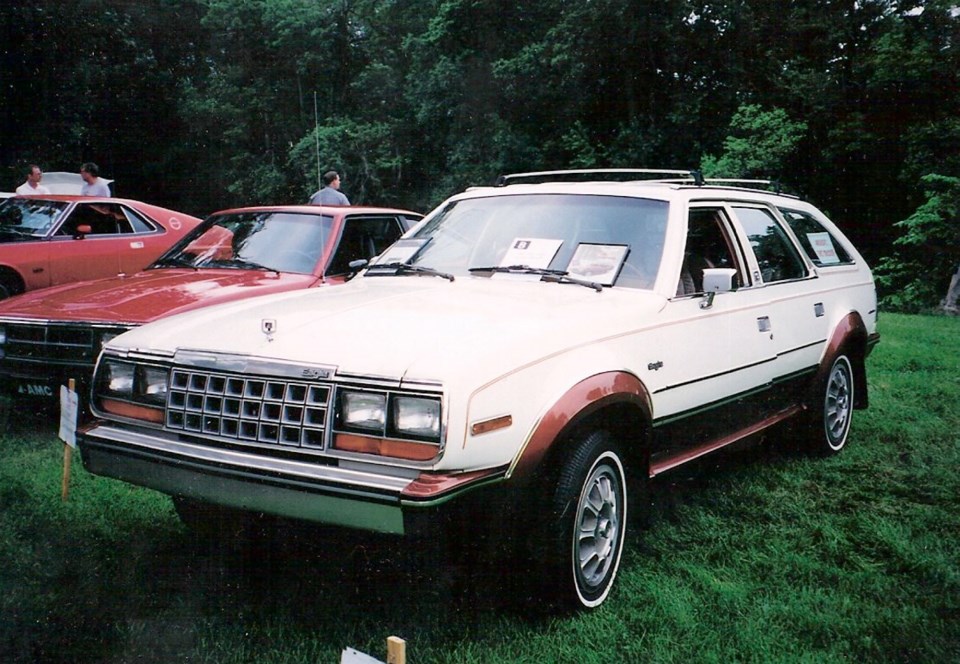American Motors Corp. was formed in 1954 through the amalgamation of Nash Motor Co. of Kenosha, Wisconsin, and Hudson Motor Car Co. of Detroit, but its life would not be easy.
Under the relentless competition from the Big Three (General Motors, Ford and Chrysler), it was almost perennially short of money. It therefore had to explore market niches the Big Three weren’t in, and that it could enter without too much cost.
Since AMC produced the Jeep, the world’s most famous four-wheel-drive sport-utility vehicle, it seemed natural to try capitalizing on this high-traction reputation in the passenger-car market. But rather than a rugged, off-roading type vehicle, it wanted a comfortable passenger car with the superior capability of all-wheel drive.
Such vehicles are relatively recent. In the 1970s, 4WD was largely confined to trucks, off-roaders and other sport-utilities, with a few exceptions such as the then-slightly-offbeat Japanese Subaru. Audi’s famous Quattro system was still in the concept stage.
Jensen Motors of England had begun offering 4WD in the mid-1960s in its powerful FF (Ferguson Formula) model, a version of the Jensen Interceptor. But it was expensive and out of the automotive mainstream.
To capitalize on its expertise and 4WD heritage, AMC modified existing hardware to develop a four-wheel-drive car with ample size, the luxury of a regular car and an appearance that was almost normal, albeit a little higher than usual. Called the Eagle, it was introduced in 1980 as the first production 4WD automobile from a North American manufacturer.
The Eagle’s body was a slightly modified AMC Concord, a model that traced its origins back to the Hornet introduced 10 years earlier. To accommodate 15-inch wheels, up from the Concord’s 14s, and to try masking the 76-millimetre-higher stance, the lower body panels were fitted with plastic fender flares. It still looked like a tall Concord.
To preserve a car-like ride, the Eagle had independent front coil spring suspension rather than the Jeep’s rugged solid axle and leaf springs. The coil springs were slightly stiffer than the Concord’s, and mounted above the upper control arms in normal AMC fashion. This simplified the accommodation of the front drive axles. Rear suspension was by leaf springs and there were front and rear anti-roll bars.
Power came from AMC’s reliable, if unexciting, 4.2-litre overhead-valve inline six introduced in 1964. The running gear was a clever engineering exercise using an advanced version of the 4WD Quadra-Trac system first used on 1973 Jeeps.
As with regular 4WDs, the power took two routes. The first was straight through the transmission to the rear axle. The second was to a chain-driven transfer case beside the transmission that fed power forward to the front axle.
What made the Eagle’s system more advanced was a liquid silicone viscous coupling in the transfer case that achieved front-to-rear limited-slip action. The silicone was about the consistency of liquid honey, and during normal driving it allowed the front and rear driveshafts to turn at slightly different speeds.
When the speed difference between the two driveshafts became greater, however, indicating a loss of traction at one axle, the silicone immediately solidified to lock up the drive.
The magic of silicone, therefore, eliminated the normal and potentially troublesome mechanical limited-slip mechanism with its clutch plates, springs and the like.
Because the Eagle was not meant as an off-road vehicle, the transfer case had one speed only. The 4WD was engaged full-time and was transparent to the driver. The only transmission available was a three-speed Chrysler-built automatic.
The Eagle came in two- and four-door sedans anda four-door wagon, and in Standard, Sport and Limited trim levels.
Performance could be called adequate for this class of vehicle. Car and Driver reported a modest zero-to-100 km/h time of 13.2 seconds and a top speed of 140 km/h. But enhanced traction, not high performance, was the Eagle’s goal, and the test crew was impressed with its ride, handling and go-anywhere capability.
Initial demand for Eagles was so strong, particularly in mountainous areas, that AMC discontinued the turtle-shaped “fish bowl” Pacer to free up production capacity. The Eagle was produced until 1987, by which time the model lineup had shrunk to a wagon only.
1987 was a year of big changes in the boardroom, as AMC was bought by the Chrysler Corporation and became Chrysler’s Jeep-Eagle Division.
The 4WD Eagle was a good pioneering effort that married the size and comfort of an American car with the security and traction of a sophisticated four-wheel-drive system. And it did this without requiring special effort or attention from the driver, thus helping pave the way for the proliferation of 4WD cars available today.



